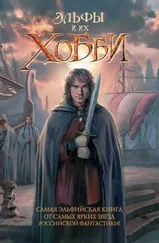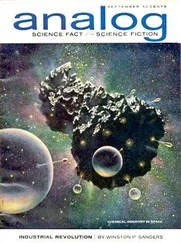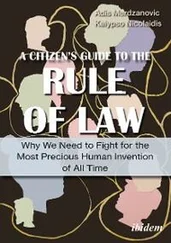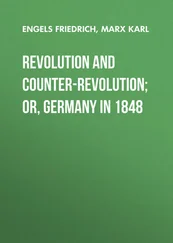The Chileans, running dangerously low on victory medals, now planned a march on Lima, the Peruvian capital. Forty-two thousand Chileans landed on the coast and marched toward the Peruvian duct-taped defenses outside the city. The defenders scraped the bottom of the barrel and formed ten reserve divisions of troops grouped by their civilian jobs. Thus the retail merchants, decorators, hairdressers, economists, teachers, and others with normally peaceful jobs all had their own divisions and their share of the city’s defense. Even some of the Altiplano natives with blowgun darts and poison arrows pitched in. When you are defending your capital with hairdressers and guys with blowguns, one must begin to realize that hope has fled the field.
The Chileans punched through the Peruvian hairdressers, shrugged off the flesh wounds from the dart guns, and capped their victory with a spree of looting and killing stragglers. Pierola ordered his soldiers to turn in their weapons and go home. Lima was now wide open. As the Chileans moved in to loot on January 16, 1881, Pierola took his government into the hills, becoming the second Peruvian leader to flee in the war. He bugged out so quickly he didn’t even have time to cart along the state papers or raid the treasury for some traveling money. A South American dictator actually fleeing and leaving money behind? Yes, indeed. The Peruvian elite, despite complete incompetence from the beginning of this disastrous war, were determined not to give up their ill-gotten lordship over their remnants of the Spanish Empire.
The Chileans occupied Lima and installed a lawyer by the name of Francisco García Calderón as Peru’s new president, expecting that he would repay the kindness by surrendering. The Chileans allowed Calderón to raise a small army mainly to protect himself from some of his angrier citizens. The Chileans found out, however, that he was not the pliable puppet he appeared to be. Infected with the illogic of the office, Calderón found a way out of signing a total surrender when the U.S. diplomats insisted that Chile could not keep any conquered territory unless the losers refused to pay war reparations.
Meanwhile, Pierola continued his resistance from the hills and was joined in April 1881 by the recently wounded General Andrés Cáceres, one of his ablest generals. The duo planned to maintain a low-level guerrilla war, hoping the Chileans would tire and offer a face-saving peace. To fight his new war Cáceres gathered sixteen of his finest comrades.
Beyond desperation, the Chileans sent a division into the mountains to chase the rebels. As they plodded high in the Andes, the wily Cáceres, whose forces now numbered about one hundred, easily sidestepped his would-be captors. They never got within smelling distance. The occupation-hating Peruvians flocked to Cáceres and swelled his mountain army by the thousands.
Frustrated by Calderón’s refusal to sign the peace treaty, the conquerors tossed him into jail. Easy come, easy go. The imprisonment transformed Calderón into a Peruvian martyr. On his way to the big house he named Admiral Montero the new president. Peru now boasted two illegitimate leaders. Cáceres, a wily backstabber, abandoned Pierola and threw his support to Montero. The now-dangling Pierola headed out on the well-worn path of exile to Europe.
Despite the march of Chilean victories, the war still refused to end. Cáceres took on the Chileans and even bested them on a few occasions. The occupation was beginning to tear Chile apart. Politicians in Chile raged at each other to handle the occupation. Some favored staying the course until a single, stable dictatorship was established in Peru. Others wanted to pull out and just hold on to the guanolands.
Into this swirling stew of chaos emerged another Peruvian wannabe, General Miguel Iglesias, a former army commander who then called for peace under any terms. Chile had found their man. That December he was elected “Regenerating President” by representatives of northern Peru. Peru now had its third title contender. The Chileans gratefully gave him money and arms so he would survive long enough to sign the articles of surrender.
To bolster Iglesias’s rule over Peru, the Chileans needed to take out Cáceres. They set out in April 1883 and crushed his army three months later. But the wily, backstabbing, apparently indefatigable leader fled, atop his wounded mount.
Now down to two rulers, the Chileans moved to pare the list. They sent several columns against Montero, holed up in his freshly declared capital of Arequipa. As the two sides faced off in October, the town’s citizens suddenly came to their senses and forced Montero to surrender without firing a shot. Montero, the fifth Peruvian leader they vanquished in the war, fled to, where else, Europe, which now boasted a bulging population of former South American rulers.
After numerous false endings, finally, the war was over. Almost. True to his word, Iglesias signed a peace treaty with the Chileans ending the war, but he forgot to tell the Bolivians, who were now shocked that their secret alliance had been violated. Of course, the Bolivians had been secretly negotiating with Chile for years, but that didn’t prevent them from getting all lathered up by this Peruvian stab in the back. Under the treaty Chile got all the guanolands it conquered and agreed to evacuate Lima, ending their nasty three-year occupation. The two countries agreed to defer ownership of some other territories for at least ten years.
Now Bolivia wanted to sign something. Having rejected out of hand a standing offer of peace in exchange for a slice of Peruvian coast, the Bolivians now decided to take the deal. The Chileans looked at the Bolivians as if they were delusional. Didn’t they get it? This sweet deal was offered solely to break up the Peru/Bolivia marriage from hell. Once Peru had capitulated, the deal was dead. The Chileans wanted to legalize their conquests, not dicker with the broken Bolivians. The Bolivians had proved equally inept as diplomats as fighters. Finally, the two sides collapsed into a truce; the Chileans administered the conquered territories, and a final peace treaty was worked out.
First, the war wouldn’t end. Then peace negotiations wouldn’t end. After years of talks, in 1904 Bolivia and Chile signed a deal ending the war and legalizing Bolivia’s status as a landlocked nanopower.
Peru and Chile haggled for years over the disputed territories. Finally, they wrapped up the paperwork in 1929 with Peru salvaging an infinitesimal grain of honor by retrieving one of the lost territories.
After losing its coastline, Bolivia decided to create a navy. With admirals.
Bolivia has been landlocked ever since losing the war. Every year, on March 23, people gather in downtown La Paz to hurl invective at the Chileans. The country’s leaders speechify about how they plan to regain the lost territories. When the rally breaks up, the people make plans to renew their passports so they can visit the beach.
Peru has continued its slide from keystone of the vast Spanish Empire to also-ran. General Cáceres resisted the lure of European exile and instead hunkered down and continued to lead his small band of mountain rebels. In 1884 he declared himself president of Peru aiming to oust the traitorous Iglesias. The next year Cáceres marched his army over freezing mountain passes to bypass Iglesias’s army and stormed Lima. Iglesias surrendered and Cáceres took over. Widely viewed as the true hero of the resistance to Chile, he was elected president the following year in a wave of patriotic fervor. Cáceres, perpetuating the dictator revolving door, welcomed Iglesias back into the army as a general.
Daza returned to Bolivia from his exile in Europe in 1894. When he stepped off the train, he was immediately assassinated.
Читать дальше












